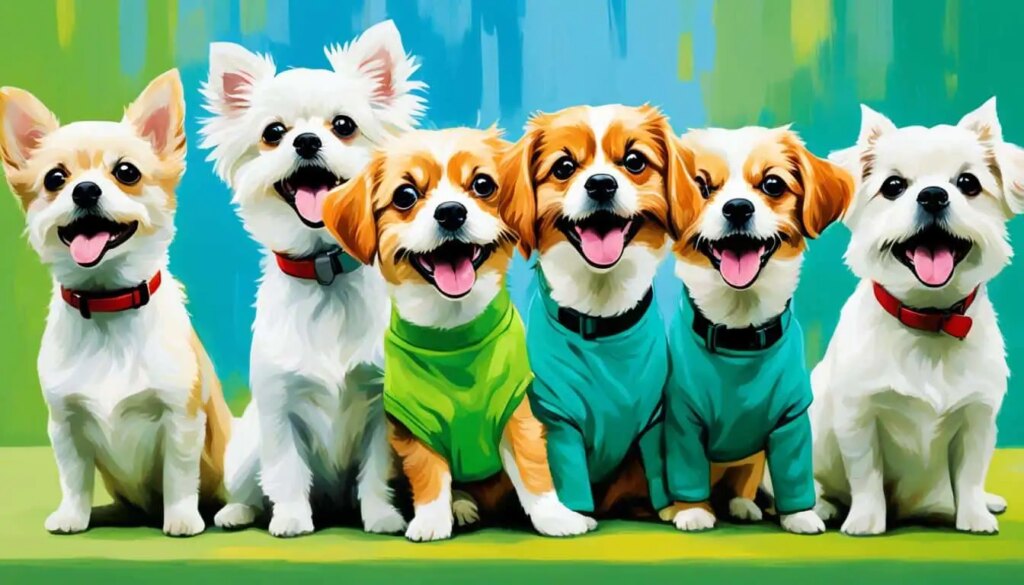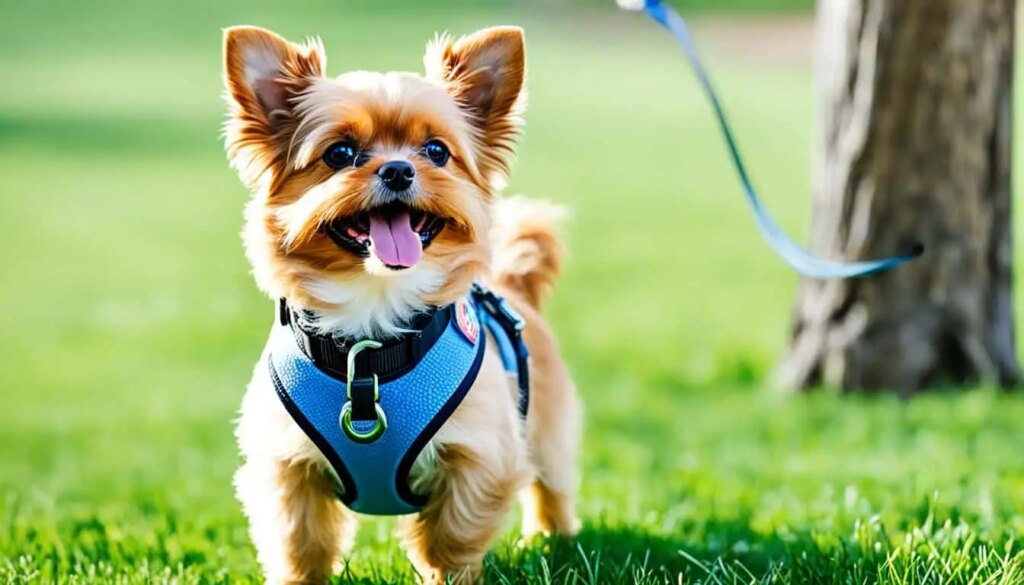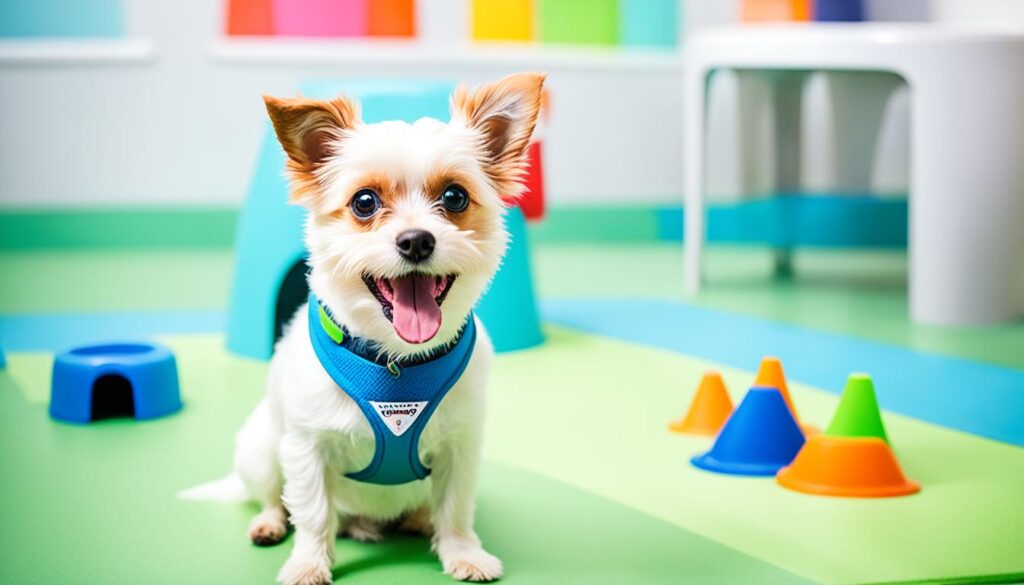Did you know that certain small dog breeds are easier to potty train than others? According to a study conducted by researchers at the University of Helsinki, the breed of a small dog can significantly impact its trainability when it comes to potty training. This surprising fact emphasizes the importance of choosing the right breed for successful potty training. In this article, we will explore the factors that influence dog trainability, highlight the top potty-trainable small breeds, and provide tips for achieving potty training success.
Understanding Dog Trainability and Intelligence
When it comes to potty training small dogs, understanding their trainability and intelligence is essential. The ability of a dog to learn and adapt to new commands and behaviors varies depending on various factors. The breed of the dog plays a significant role in determining their trainability, but it is important to distinguish between trainability and obedience.
The Role of Breed in Dog Trainability
The breed of a dog influences their trainability to a great extent. Certain breeds are known for their high trainability and intelligence, making them easier to potty train. For example, Border Collies and German Shepherds are highly intelligent breeds that excel in various training activities, including potty training. On the other hand, some breeds may require more time and effort to be successfully potty trained.
Distinguishing Between Trainability and Obedience
It is important to differentiate between a dog’s trainability and obedience. Trainability refers to a dog’s ability to learn and acquire new skills, while obedience refers to the dog’s willingness to follow instructions and commands. A trainable dog may not necessarily be obedient, and an obedient dog may not always be easy to train. Therefore, while considering the trainability of small dog breeds, it is important to assess both their ability to learn and their willingness to obey.
Factors That Influence Potty Training Success
Aside from breed, several factors influence the success of potty training small dogs. Understanding these factors can help dog owners develop effective training strategies. Some of the key factors that play a role in potty training success include:
- Genetics: Certain breeds have a natural inclination towards quick learning and adaptation, making the potty training process easier.
- Temperament: The temperament of a dog, including their ability to focus, eagerness to please, and adaptability, can greatly impact their success in potty training.
- Early Socialization: Early socialization plays a vital role in a dog’s overall behavior and trainability. Dogs that have been properly socialized from an early age tend to be more receptive to training.
By considering these factors and understanding the trainability and intelligence of small dog breeds, dog owners can develop effective potty training strategies. Next, we will highlight the top potty-trainable small breeds that are known for their trainability and ease of potty training.
Continue to Section 3: Highlighting the Top Potty-Trainable Small Breeds
Highlighting the Top Potty-Trainable Small Breeds
When it comes to potty training, some small dog breeds are easier to train than others. These breeds have a natural inclination to learn and follow commands, making the training process smoother for both the dog and the owner. If you’re looking to bring home a small breed that is highly trainable when it comes to potty training, consider the following top potty-trainable small breeds:
- Australian Cobberdogs
- Labradoodles
- Golden Labrador Retrievers
- Poodles
- Shetland Sheepdogs
- And more!
These breeds not only possess the intelligence and eagerness to please, but they also have a natural ability to grasp the potty training concept quickly. Their trainability and willingness to learn make them ideal for households looking for a small breed that can be easily potty trained.
If you’re considering one of these top potty-trainable small breeds, be sure to provide them with consistent and positive training methods to ensure success. Remember, each dog is unique, so patience and consistency are key in the potty training process.
Potty training a small breed can be a rewarding experience when you have a breed that is naturally inclined to learn and follow commands. With the right training approach, you can establish a strong potty training routine and enjoy a well-trained and clean companion.

Which Small Dog Breed Is Easiest to Potty Train?
The University of Helsinki study provides valuable insights into which small dog breeds are the easiest to potty train. The study found that breeds like Australian Cobberdogs, Australian Labradoodles, and Golden Labrador Retrievers have a higher focus and ease of learning. Additionally, certain personality traits, such as intelligence, eagerness to please, and adaptability, can greatly affect a dog’s success in potty training.

Insights from the University of Helsinki Study
The University of Helsinki conducted a study to determine the ease of potty training in small dog breeds. Through their research, they discovered that certain breeds exhibited notable trainability and a higher success rate in potty training. The breeds that stood out as the easiest to potty train included Australian Cobberdogs, Australian Labradoodles, and Golden Labrador Retrievers.
These breeds demonstrated a remarkable focus and faster learning capabilities, making them more receptive to potty training. Their intelligence level and eagerness to please their owners were key factors in their trainability. The study’s findings provide valuable guidance for dog owners who are seeking a small breed that is easy to potty train.
Personality Traits Affecting Potty Training
In addition to breed characteristics, a dog’s personality traits play a crucial role in their success with potty training. Dogs that possess high intelligence tend to grasp concepts more quickly and are more inclined to learn proper potty habits.
Furthermore, dogs with an eagerness to please their owners are more motivated to comply with training commands, including potty training. This willingness to please makes the training process smoother and more efficient.
Adaptability is another personality trait that can impact a dog’s potty training progress. Dogs that are adaptable and open to new experiences are more likely to adjust to new routines and environments, making them easier to train in terms of potty habits.
Potty Training Tips for Success with Small Dogs
To successfully potty train a small dog, it’s important to establish a consistent potty training routine. This routine helps the dog develop a clear understanding of when and where they should eliminate. Here are some tips for creating an effective potty training routine:
Establishing a Potty Training Routine
1. Take your small dog outside regularly, preferably every 2-4 hours, to a designated potty area.
2. Choose a specific command, such as “Go potty,” to use every time you take your dog outside to reinforce the association between the command and the act of elimination.
3. Use a leash when taking your dog outside for potty breaks to keep them focused and prevent distractions.
Positive Reinforcement Techniques
1. Reward your small dog with praise, treats, or a special toy immediately after they eliminate in the designated potty area.
2. Consistently use positive reinforcement to reinforce desired behavior and motivate your dog to continue potty training success.
3. Avoid punishment or scolding if accidents occur, as this can create anxiety or confusion in your dog.
4. Create a positive and rewarding experience for your small dog during the potty training process.
Understanding the Signs and Communicating with Your Dog
1. Learn to recognize the signs that indicate when your small dog needs to eliminate, such as circling, sniffing the ground, or scratching at the door.
2. When you see these signs, immediately take your dog to the designated potty area.
3. Use verbal cues and body language to communicate with your dog during potty training. For example, using a calm and encouraging tone of voice and pointing towards the designated area.
4. Be patient and understanding as your small dog learns to communicate their needs and adjust to the potty training routine.
By following these potty training tips, establishing a routine, using positive reinforcement techniques, and understanding your small dog’s communication, you can achieve success in potty training and develop a trusting bond with your furry companion.
Conclusion
Potty training small dogs can be a challenging but rewarding process. By understanding the factors that influence trainability, highlighting the top potty-trainable small breeds, and following effective training tips, dog owners can achieve potty training success and enjoy a harmonious relationship with their furry companions.
Throughout this article, we have explored the importance of breed in dog trainability and the distinction between trainability and obedience. We have also discussed the various factors that can influence potty training success, such as genetics, temperament, and early socialization.
Furthermore, we have highlighted some of the top potty-trainable small breeds, including Australian Cobberdogs, Labradoodles, Golden Labrador Retrievers, Poodles, and Shetland Sheepdogs. These breeds demonstrate a natural inclination to learn and follow commands, making them more receptive to potty training.
To achieve potty training success with small dogs, it is essential to establish a consistent potty training routine. Take your dog outside at regular intervals, use positive reinforcement techniques to reward desired behavior, and pay attention to the signs that indicate when your dog needs to go. Effective communication with your dog is key in fostering successful potty training.
By implementing these strategies, dog owners can overcome the challenges of potty training and create a clean and comfortable environment for their small dogs. Remember, patience, consistency, and understanding are the keys to potty training success for small dogs, allowing both owner and pet to enjoy a happier, stress-free life together.
